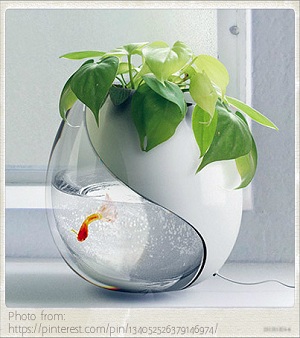What Are Fish Tank Filters Really For?
The main reason for having a fish tank filter in your aquarium is to remove any waste matter from the water so that the living condition that
the fish and aquatic life have to survive in is as close as possible to their natural environment.
The waste matter that needs to be removed are usually large debris which is made up generally of excess food and fish waste as well as chemicals that might have been used to treat the water especially in quarantine tanks for sick fish. If the waste matter is left in the tank too long, it will reduce the water quality, causing the fish to be more prone to disease, less energetic, less colorful and even cause them to have problems breeding.
Choosing The Right Fish Tank Filter
The kind of fish tank filter you need to purchase will depend on a number of criteria such as:
* How big your aquarium is
* The number of fish that you have in there
* How frequent can you clean the filter
* What's your budget
The answers to the four criteria above will help you determine the type of filter that you should but. Below is a quick guide on the various fish tank filters that are available today.
Box Filters
A very basic fish tank filter. Box filters work by pumping water through a clear box that contains filter media. The box sits on the base at the back of the tank. These filters are meant for small fish tanks that do not have many fish in them because they are not very efficient. The filter media needs to be cleaned each week or they would be clogged by large debris. The plus point is that they are very cheap.
Sponge Filters
Most of the time, sponge filters are used as a secondary filter to back up a main filter. Water is made to flow through the sponge that filters it of waste matter. You can get these filters at various sizes but if you plan to use it as a main filter, use it for small tanks with less fish. The sponge requires weekly cleaning to filter properly. They are relatively cheap to purchase.
Undergravel Filters
Undergravel filters are usually sold as a set when you buy a fish tank for beginners. A raised platform sits at the bottom of the tank with a layer of gravel over it. Water is pumped through the layer of gravel to the space below the platform before cycling back into the tank. In this way the gravel acts as the filter media. This type of filter is meant for small to medium tanks with not too many fish. They require maintenance every forthnight, usually involving vacuuming the layer of muck that will build up over the gravel. They are relatively inexpensive but generally comes in fixed sizes so you might not be able to find a suitable size if you have a custom made fish tank.
Power Filters
Power filters are the most commonly used filter today. Water is pumped through a series of filters by using a powerhead. They can be used for a fish tank that is of medium size well stocked with fish as they work very well especially if they are well maintained. Power filters require only a monthly cleaning schedule. They may not be that cheap at first but will save you time and money later.
Canister Filters
The most efficient fish tank filters available today. Water flows thorugh a series of filter media in a canister that usually sit below the fish tank, outside of it. They are excellent for medium to large fish tanks and with as many fish as you want. These filters need extremely little maintenance, never more than once every three months. They are expensive though but if you can afford one, it will save you so much on time and money in the long run.

 Introduction To Of Some Lower Cholesterol Foodstuffs
Cholesterol is a fat-like element contained in the physique
Introduction To Of Some Lower Cholesterol Foodstuffs
Cholesterol is a fat-like element contained in the physique
 The Simplest Way To Lessen Your High Cholesterol By Natural Means
High-cholesterol is a major variable inside the countrywide
The Simplest Way To Lessen Your High Cholesterol By Natural Means
High-cholesterol is a major variable inside the countrywide
 Starting Up An Aquaponics Set Up From See The Easy Way
Planting seeds in your aquaponics system can be a lot simpl
Starting Up An Aquaponics Set Up From See The Easy Way
Planting seeds in your aquaponics system can be a lot simpl